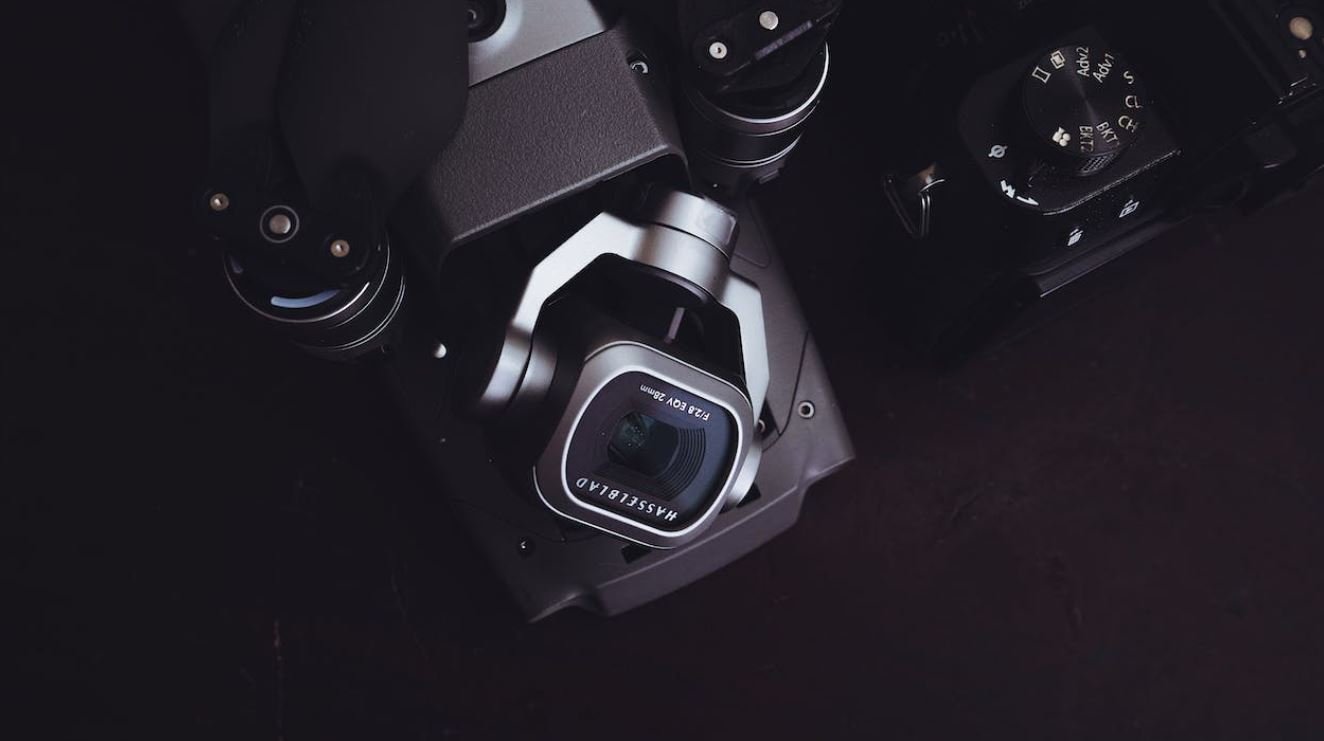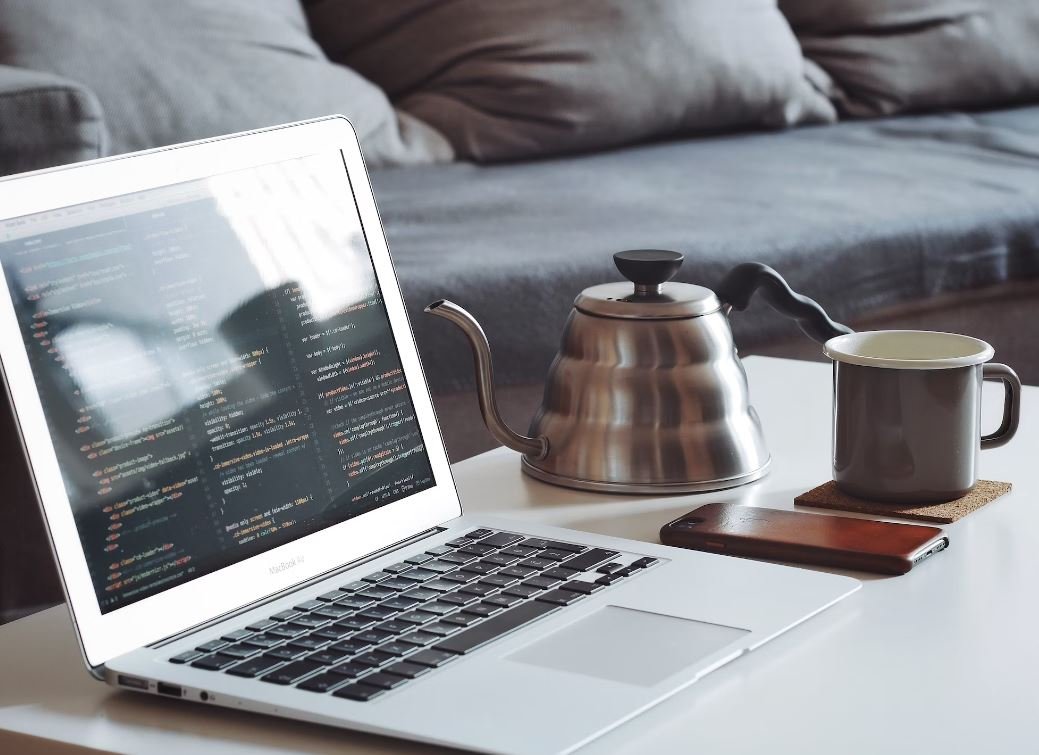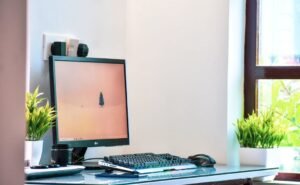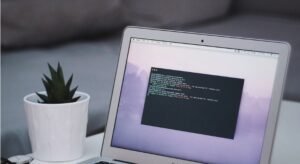How AI Art Works
The world of art has been revolutionized by the rise of Artificial Intelligence (AI) technology. AI art refers to
artworks created with the assistance of AI algorithms and machine learning. Utilizing complex algorithms, AI is
able to generate unique pieces of art by mimicking the human creative process.
Key Takeaways:
- AI art involves the use of algorithms and machine learning to create unique artworks.
- AI can mimic the human creative process and generate various art forms.
- The process of AI art involves training algorithms with large datasets.
- AI art challenges traditional definitions of authorship and creativity.
AI art begins with training algorithms using large datasets consisting of existing artworks that span various art
styles and periods. *These algorithms analyze the patterns, techniques, and aesthetics present in the dataset,
allowing them to learn and understand the underlying principles of different art forms.* Once trained, the AI
algorithms can generate new artworks by combining and reinterpreting the learned patterns with human input or
randomization.
One compelling aspect of AI art lies in the interaction between the AI system and the human artist. While the AI
algorithms handle the initial creation, the artist plays a vital role in refining, selecting, and adding a human
touch to the generated output. *This collaboration between humans and AI blurs the boundaries between
traditional and AI-generated art.*
The Process of AI Art:
- Data Collection: Gather large datasets of existing artworks.
- Training: Use algorithms and machine learning to analyze the datasets and learn artistic principles.
- Generation: Generate new artworks by combining learned patterns and human input/randomization.
- Refinement: The human artist further refines, selects, and adds their creative touch to the generated output.
- Showcasing: Display the AI-generated artworks in exhibitions or online platforms for public appreciation.
| AI Art Advantages | AI Art Challenges |
|---|---|
|
|
The impact of AI art extends beyond the canvas. It also raises important questions about the nature of creativity
and the definition of authorship in the digital age. *As AI advances, it challenges our understanding of what it
means to be an artist and the source of creative expression.* AI-generated artworks have gained recognition and
appreciation in various art communities, with exhibitions and auctions dedicated solely to AI art.
The Future of AI Art:
Despite the ongoing debate surrounding AI art, it continues to evolve and capture the imagination of both artists
and technology enthusiasts. As AI algorithms become more sophisticated and capable of emulating human creative
processes, we can expect AI art to push boundaries even further. *The integration of AI into the art world opens
up exciting possibilities for innovation, collaboration, and redefining artistic boundaries.*
| AI Art Advancements | Impact on Art Community |
|---|---|
|
|
As AI art continues to grow in prominence, it will undoubtedly shape the future of the artistic landscape. The
integration of AI algorithms and machine learning into the creative process provides a unique avenue for artistic
exploration and innovation. *With AI technology constantly improving, the possibilities for AI art are bound to
expand, offering new perspectives and challenges to the art world for years to come.*

Common Misconceptions
There are several common misconceptions people have when it comes to AI art. These misunderstandings can arise from a lack of information or from misconceptions propagated by popular media. It is important to debunk these misconceptions and gain a better understanding of how AI art truly works.
Misconception 1: AI art lacks creativity
- AI art is not simply a product of algorithms; it combines computational power with human creativity.
- Artificial intelligence can generate new and unique ideas, often surpassing what a human artist can envision.
- AI art reveals the interplay between human and machine creativity, resulting in unexpected and innovative artworks.
Misconception 2: AI art can replace human artists
- AI art is not meant to replace human artists, but rather to augment their creative process and provide new tools for expression.
- Human artists possess a unique ability to infuse art with personal experiences and emotions, which AI lacks.
- AI can assist human artists in generating ideas, exploring new styles, and enhancing their creative process, but it cannot entirely replace their role.
Misconception 3: AI art is easy to create
- Creating AI art requires a deep understanding of both art and machine learning algorithms.
- AI models need to be trained on vast datasets and fine-tuned to produce desired results.
- Artists working with AI need to constantly experiment and refine their models and techniques to achieve quality results.
Misconception 4: AI art lacks artistic value
- AI-generated art is not devoid of artistic value, as it challenges conventional notions of authorship and creativity.
- The use of AI in art can raise philosophical and ethical questions, sparking discussions around the definition of art itself.
- AI art can offer new perspectives, push boundaries, and stimulate critical thinking, making it a valid form of artistic expression.
Misconception 5: AI art is all about copying existing styles
- While AI can replicate existing artistic styles, it can also create entirely new styles and blur the lines between different genres.
- AI algorithms can combine and remix various artistic influences to create unique and original artworks.
- AI art can inspire human artists to explore new artistic directions and experiment with unconventional techniques.

Introduction
Artificial intelligence (AI) has made significant advancements in various domains, including the creation of art. AI art works are generated through complex algorithms capable of producing unique and captivating pieces. These tables showcase different aspects of AI art, providing insight into the techniques, artists, and impact of this exciting field.
1. AI Art Styles and Techniques
Understanding the multitude of AI-generated art styles and techniques is crucial to appreciating the depth and diversity of this field. From abstract expressionism to cubism, AI seamlessly incorporates these styles to create visually striking compositions.
| Style | Description |
|---|---|
| Abstract Expressionism | A style emphasizing spontaneous, gestural strokes and emotional expression. |
| Cubism | A style that portrays objects from multiple viewpoints, often breaking them down into geometric forms. |
| Impressionism | A style capturing the fleeting essence of a subject through vibrant brushstrokes and light effects. |
2. Pioneering AI Artists
Several AI artists have been at the forefront of this emerging field, pushing the boundaries of what is possible and inspiring others. Their innovative creations have garnered international recognition and redefined the art world.
| Artist | Notable Works |
|---|---|
| Raquel Meyers | Bio-Tek Kitchen, 8142khz |
| Robbie Barrat | Portrait of Edmond de Belamy, The Beach |
| Anne Toot & Marc Boon | Face Project, Butterfly Species |
3. AI Art in Museums and Galleries
The integration of AI art into traditional spaces has sparked conversations about the relevance and future of art exhibitions. Museums and galleries play crucial roles in showcasing these groundbreaking creations to the public.
| Institution | AI Art Exhibition |
|---|---|
| Museum of Modern Art (MoMA) | Art in the Age of AI |
| The Tate | Artificial Intelligence: an ever-evolving medium |
| Gagosian Gallery | Through the Eyes of AI |
4. AI Art in Auctions
The demand for AI-generated art has skyrocketed, leading to its inclusion in prestigious art auctions. These auctions offer a platform for collectors and art enthusiasts to acquire unique pieces with the potential to increase in value over time.
| Auction House | AI Artwork | Selling Price |
|---|---|---|
| Christie’s | Portrait of Edmond de Belamy | $432,500 |
| Sotheby’s | Composition with Neural Network | $98,000 |
| Phillips | AI Generated Abstract Painting | $80,000 |
5. AI Art and Originality
Questions surrounding the originality and authorship of AI-generated art have emerged, challenging traditional notions of creativity. Understanding the interplay between AI systems and human artists is essential to appreciate the intricate nature of these creations.
| Aspect | Perspective |
|---|---|
| Human-AI Collaboration | An artist guides and manipulates AI algorithms, ultimately shaping the final artwork. |
| Algorithmic Autonomy | Some AI systems generate art without direct human intervention, leading to AI-authored pieces. |
| Creative Input | Human input, such as dataset selection or algorithm design, significantly influences the artwork’s outcome. |
6. AI Art and Ethical Considerations
With AI-generated art becoming more prevalent, ethical concerns have arisen, ranging from issues of bias to the impact on traditional artistic professions. Acknowledging and addressing these concerns is essential to ensure the responsible development and use of AI in art.
| Concern | Implications |
|---|---|
| Ethical Bias | AI systems may perpetuate societal biases when generating art, leading to discriminatory representations. |
| Artistic Job Displacement | As AI systems gain capabilities, some artistic professions may face changes or, in some cases, even become obsolete. |
| Ownership and Copyright | Defining the rights and ownership of AI-generated art poses legal and ethical challenges for artists and collectors. |
7. AI Art Applications beyond Visual Art
AI’s influence extends beyond traditional visual arts such as painting and sculpture. It has paved the way for novel applications in music, literature, and even performance art.
| Domain | AI Art Application |
|---|---|
| Music | Symphony of Synapses: An AI-composed music piece blending various genres. |
| Literature | AI Short Story Generator: A system that generates unique and engaging short stories. |
| Performance Art | Robotic Interactive Dance Performance: AI-powered robots engaging with human dancers in a choreographed performance. |
8. AI Art and Emotional Response
AI-generated art can evoke a wide range of emotional responses. Whether it elicits admiration, contemplation, or even discomfort, the emotional impact of AI art is a testament to the power of these creations.
| Emotion | Artwork Example |
|---|---|
| Amazement | AI-generated landscape with vivid colors and intricate details. |
| Curiosity | Abstract art piece that challenges traditional notions of form and perspective. |
| Unease | Distorted portrait conveying an unsettling combination of realism and abstraction. |
9. AI Art in Education and Research
The integration of AI art in educational institutions and research institutes fosters innovation and deepens our understanding of AI’s creative potential. It offers unique opportunities for studying the intersection of technology and art.
| Institution | AI Art Program |
|---|---|
| Stanford University | AI Art Lab: A research lab exploring the intersection of artificial intelligence and visual arts. |
| New York University Tisch School of the Arts | Interactive Media Arts: A program emphasizing the integration of AI and interactive art installations. |
| MIT Media Lab | Artificial Intelligence Art and Media Group (AIM): A collaborative initiative exploring the implications and applications of AI in art. |
10. The Future of AI Art
The future of AI art holds endless possibilities. This fusion of technology and creativity continues to shape and redefine the artistic landscape, challenging our perceptions and expanding the boundaries of human imagination.
As AI algorithms advance, the line between human and AI-generated art becomes increasingly blurred, leading to new discussions, discoveries, and debates within the art community. With AI art taking its place in galleries, museums, and auctions, its impact will continue to stimulate artistic expression and transform our understanding of what it means to create.
Frequently Asked Questions
How AI Art Works
How does AI art creation differ from traditional art?
AI art creation involves using artificial intelligence algorithms and techniques to generate artwork autonomously. Unlike traditional art, which requires manual intervention, AI art can create original pieces based on predefined parameters.
What are some common AI techniques used in creating art?
Common AI techniques used in creating art include machine learning, deep learning, neural networks, generative adversarial networks (GANs), and evolutionary algorithms. These techniques enable AI systems to learn from large datasets and generate art that mimics human creativity.
Can AI art be considered “real” art?
The definition of art is subjective and varies across individuals. While AI art is created by machines, it can still evoke emotions, challenge conventions, and stimulate thought, just like traditional art. Whether AI art is considered “real” art or not is a matter of personal interpretation.
How does AI learn to create art?
AI learns to create art through a process called training. Initially, it is fed large volumes of existing artworks and data. By analyzing patterns, styles, and techniques within these datasets, AI algorithms learn to generate new art that adheres to similar aesthetics. Through iteration and feedback mechanisms, the system refines its art generation capabilities over time.
How do AI art generators handle copyright and ownership?
Copyright and ownership of AI-generated art can be complex. Generally, the creator of the AI system, which generated the art, holds the copyright. However, legal frameworks and intellectual property laws differ across regions, and specific cases may involve additional considerations such as human involvement or collaboration. It is advisable to consult legal experts to navigate the intricacies of AI art ownership.
Can AI-generated art be sold or displayed in galleries?
AI-generated art can be sold and displayed in galleries. As AI art gains recognition and appreciation, it has been exhibited in prestigious galleries worldwide and acquired by collectors. The value and marketability of AI art largely depend on factors such as uniqueness, artistic merit, and the reputation of the AI artist or system behind it.
Can AI art replicate the creativity of human artists?
AI art can replicate certain aspects of human creativity but may struggle with the emotional and intuitive elements that arise from human experiences and consciousness. However, AI algorithms continue to improve, and there have been instances where AI-generated art has astounded experts and elicited admiration comparable to human-made art.
What are some applications of AI art beyond aesthetics?
AI art has applications beyond aesthetics. It can be used for data visualization, storytelling, creative expression, and even therapeutic purposes. Additionally, AI art can act as a tool for exploring and understanding the capabilities of artificial intelligence, pushing the boundaries of its creative potential.
What are some ethical considerations surrounding AI art?
Ethical considerations surrounding AI art include issues of authorship, proper attribution, the potential for misuse or manipulation, and the impact on the art market. Additionally, questions related to the relationship between human creativity and AI-generated art and the implications for the future of artistic expression and cultural heritage arise in ethical discussions surrounding AI art.
What does the future hold for AI art?
The future of AI art is promising. As technology advances and AI algorithms improve, we can expect more sophisticated and nuanced AI-generated artwork. AI may also continue to collaborate with human artists, pushing the boundaries of creativity. The impact of AI art on society, culture, and the art industry is yet to be fully realized, but its potential for innovation and disruption is undoubtedly significant.




